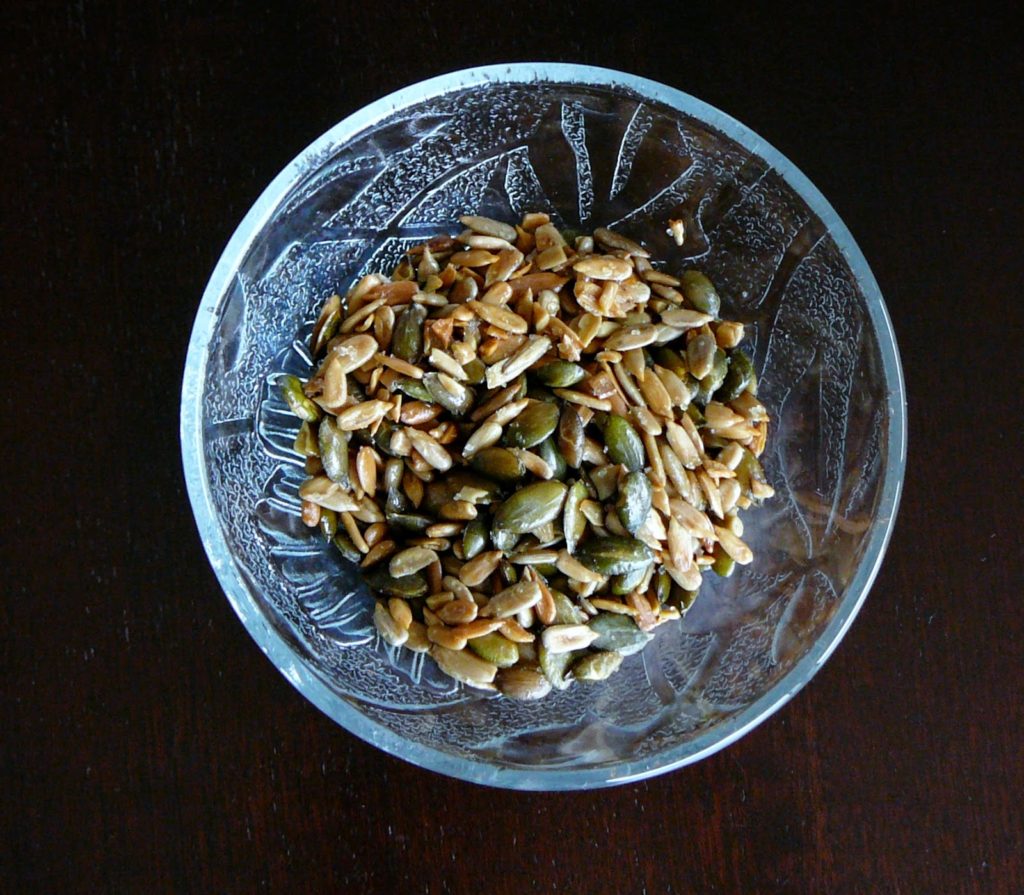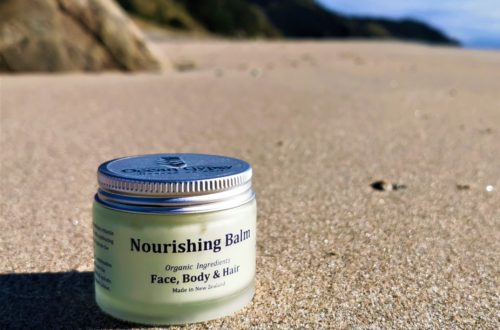Seed Cycling; A traditional solution to regulate hormones.
In the pursuit of holistic wellness, there’s a growing appreciation for natural remedies that harness the power of plants to support our bodies’ intricate systems. One such practice gaining traction is seed cycling, a gentle yet effective approach to hormone balance rooted in traditional wisdom and modern holistic principles.

Understanding a Women’s Luna Cycle
A woman’s menstrual cycle is a complex and dynamic process that involves various hormonal changes and physiological events. It typically lasts about 28 days, although it can vary in length from person to person and cycle to cycle. The menstrual cycle is divided into several distinct phases, each characterized by specific hormonal fluctuations and physiological changes. Here’s an overview of the different phases:
Menstruation (Days 1-5):
- The menstrual phase marks the beginning of the menstrual cycle and is characterized by the shedding of the uterine lining (endometrium) in the absence of pregnancy.
- Estrogen and progesterone levels are low at the start of menstruation.
- Menstrual bleeding typically lasts around 3 to 7 days, although the duration can vary.
- During this phase, follicle-stimulating hormone (FSH) levels begin to rise, stimulating the development of ovarian follicles.
Follicular Phase (Days 1-14):
- The follicular phase begins on the first day of menstruation and ends with ovulation, usually around day 14 of a 28-day cycle.
- FSH stimulates the growth and maturation of ovarian follicles, each containing an immature egg (oocyte).
- Estrogen levels gradually increase during this phase, promoting the thickening of the uterine lining in preparation for potential implantation.
- Ovulation typically occurs around mid-cycle when a mature follicle ruptures and releases an egg from the ovary into the fallopian tube.
Ovulation (Day 14):
- Ovulation is the release of a mature egg from the ovary, facilitated by a surge in luteinizing hormone (LH).
- Ovulation usually occurs around day 14 of a 28-day cycle, although the timing can vary.
- This phase is characterized by a brief spike in body temperature and changes in cervical mucus consistency, which can help identify the fertile window for conception.
- If fertilization does not occur within about 24 hours after ovulation, the egg will degenerate.
Luteal Phase (Days 15-28):
- The luteal phase begins after ovulation and lasts until the start of the next menstrual period.
- After ovulation, the ruptured follicle transforms into a structure called the corpus luteum, which produces progesterone.
- Progesterone levels rise during this phase, maintaining the uterine lining and preparing it for possible implantation of a fertilized egg.
- If fertilization and implantation do not occur, progesterone levels decline, leading to the breakdown of the uterine lining and the onset of menstruation.
Pre-Menstrual Phase (Days 25-28):
- In the days leading up to menstruation, progesterone levels decline, and estrogen levels may fluctuate.
- Some women experience pre-menstrual symptoms (PMS), such as bloating, mood swings, breast tenderness, and fatigue, during this phase.
- The pre-menstrual phase transitions into menstruation, marking the start of a new menstrual cycle.
Understanding Seed Cycling: A Journey Through Nature’s Pharmacy
Seed cycling involves incorporating specific seeds into your diet during different phases of the menstrual cycle to support hormonal health. Its origins can be traced back to traditional medicine practices that recognized the therapeutic potential of seeds for addressing hormonal imbalances.
The Method: Nurturing Hormonal Harmony
The Follicular Phase (Days 1-14):
During the first half of the menstrual cycle, known as the follicular phase, the focus is on supporting estrogen production and regulation. To achieve this, include in your daily diet:
- 1 tablespoon of ground organic activated flax seeds: Rich in lignans, flax seeds help modulate estrogen levels.
- 1 tablespoon of ground activated organic pumpkin seeds: High in zinc and magnesium, pumpkin seeds support testosterone balance and overall hormonal health. Zinc and magnesium are vital in the production of sex hormones.
The Luteal Phase (Days 15-28):
In the second half of the cycle, known as the luteal phase, the emphasis shifts to supporting progesterone balance and production, while maintaining estrogen levels. Incorporate into your daily meals:
- 1 tablespoon of ground organic activated sesame seeds: Similar to flax seeds, sesame seeds contain lignans that help maintain estrogen balance.
- 1 tablespoon of ground organic activated sunflower seeds: Packed with vitamin E, selenium, and magnesium, sunflower seeds support progesterone production and metabolism.
Adjusting for Irregular Cycles:
For those with irregular cycles or absence of menstruation such as post menopause, align seed cycling with the lunar cycle:
- Start Day 1 on the new moon and switch seeds on Day 14 around the full moon to mimic the natural hormonal fluctuations.
Embracing Hormonal Harmony at Every Stage of Life:
Seed cycling isn’t just for menstruating women; it’s a natural approach that benefits women of all ages, from adolescence to post-menopause. Hormones play a crucial role in bone health, mood regulation, and overall well-being, making hormonal balance a priority regardless of age.
To learn more visit my YouTube Channel @clareseagrave click the button below

Why Activated Seeds?
In the world of nutrition, seeds are often hailed as nutritional powerhouses, packed with essential nutrients, healthy fats, and fiber. However, lurking within these tiny treasures is a compound known as phytic acid, which, while not inherently harmful, can interfere with the absorption of certain minerals in the body. Enter activated seeds – a simple yet transformative process that neutralizes phytic acid and unlocks the full nutritional potential of seeds. Let’s delve into the fascinating world of activated seeds, exploring why phytic acid exists in seeds and how activation can mitigate its effects.
Understanding Phytic Acid: Nature’s Defense Mechanism
Phytic acid, also known as phytate, is a naturally occurring compound found in seeds, nuts, grains, and legumes. Within the seed, phytic acid serves as a storage form of phosphorus, essential for plant growth and development. Additionally, phytic acid acts as a defense mechanism, protecting the seed from premature germination and environmental stressors.
The Problem with Phytic Acid: Mineral Interference
While phytic acid plays a crucial role in plant physiology, its presence in seeds can pose challenges for human nutrition. Phytic acid has the ability to bind to minerals such as calcium, magnesium, iron, and zinc, forming insoluble complexes known as phytates. These complexes are poorly absorbed by the human digestive system, leading to reduced bioavailability of minerals and potential nutrient deficiencies over time.
Enter Activated Seeds: Unlocking Nutritional Potential
Activated seeds, also known as soaked or sprouted seeds, undergo a simple yet transformative process that neutralizes phytic acid and enhances nutrient availability. The activation process involves soaking seeds in water for a specified period, followed by rinsing and, optionally, sprouting. This process helps to break down phytic acid and activate enzymes that aid in digestion, making the nutrients in seeds more bioavailable and easier to absorb.
How to Activate Seeds: A Simple Guide
Pumpkin Seeds:
- Soak pumpkin seeds in water for 6 to 8 hours or overnight.
- Rinse and drain the seeds thoroughly before consuming or further processing.
Sunflower Seeds:
- Soak sunflower seeds in water for 6 to 8 hours or overnight.
- Rinse and drain the seeds before consuming or using in recipes.
Flax Seeds:
- Flax seeds do not require soaking due to their small size and high oil content. However, you can still activate them by grinding them fresh before consumption to expose their inner nutrients.
Sesame Seeds:
- Soak sesame seeds in water for 2 to 4 hours.
- Rinse and drain the seeds before using them in recipes or consuming them.
Embracing the Power of Activated Seeds
By incorporating activated seeds into your diet, you can maximize the nutritional benefits of these tiny nutritional powerhouses while minimizing the potential negative effects of phytic acid. Whether added to smoothies, salads, baked goods, or enjoyed as a crunchy snack, activated seeds offer a delicious and nutrient-dense addition to any meal.
Conclusion: A Nutritional Revolution in the Palm of Your Hand
Activated seeds represent a nutritional revolution, unlocking the hidden potential of nature’s bounty and empowering us to nourish our bodies more effectively. By understanding the role of phytic acid in seeds and embracing the process of activation, we can harness the full nutritional power of seeds and support our overall health and well-being.
So, the next time you reach for a handful of seeds, consider giving them a soak and unlocking their true nutritional potential. Your body will thank you for it!
If you don’t have time to soak your seeds purchase activated seeds from your local supermarket or health food store and look for the word activated seeds and buy organic if possible.
Roar Food here in New Zealand have a large selection of activated nuts and seeds click the button below to go to their website.


